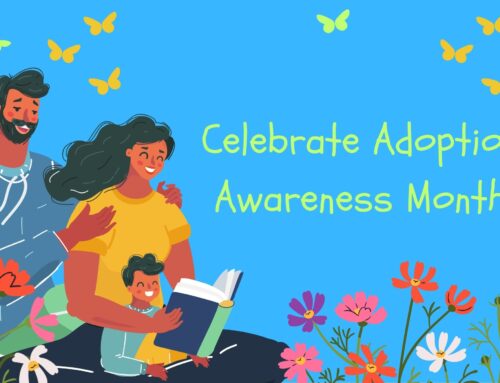
Did you know that National Hispanic Heritage Month takes place from September 15, 2025, to October 15, 2025? It’s the perfect time to celebrate Hispanic creators, inventors, authors, and artists and their contributions to our lives. One such Hispanic artist is Mexican painter Frida Kahlo! She’s most known for her portraits that explored the complex idea of identity and gave us a glimpse into her world as she saw it (and how she saw herself).
Take a look inside Frida Kahlo’s life with these photos, cool facts, and book recommendations! :
Frida by Jonah Winter
Discusses the childhood of Frida Kahlo and how it influenced her art.
Who Was Her Own Work Of Art?: Frida Kahlo by Terry Blas
Discover how Mexican painter Frida Kahlo became one of the greatest artistic voices in the world as she travels from Mexico to New York City for her first-ever solo exhibition, setting the art world aflame.
Who Was Frida Kahlo? by Sarah Fabiny
You can always recognize a painting by Kahlo because she is in nearly all of them–with her black braided hair and colorful Mexican outfits. A brave woman who was an invalid most of her life, she transformed herself into a living work of art. As famous for her self-portraits and haunting imagery as she was for her marriage to another famous artist, Diego Rivera, this strong and courageous painter was inspired by the ancient culture and history of her beloved homeland, Mexico. Her paintings continue to inform and inspire popular culture around the world.
Frida Kahlo And Her Animalitos by Monica Brown
Chronicles Frida’s life — from her childhood to her rise as one of the world’s most influential painters — capturing the beauty and strength of Frida’s creative spirit, which carried her through tragedy and triumph, and the animals that inspired her along the way.
Frida Kahlo by Ma Isabel Sánchez Vegara
Frida Kahlo’s desire to study medicine was destroyed by a childhood accident. Frida began painting from her bedside and produced over 140 works, culminating in a solo exhibition in America.
Little Frida: A Story Of Frida Kahlo by Anthony Browne
Following a bout with polio at the age of six, Frida Kahlo’s life was marked by pain and loneliness. In real life, she walked with a limp, but in her dreams, she flew. Inspired by Frida Kahlo’s diary, Anthony Browne captures the essence of the artist’s early flights of fancy and depicts both Frida and her imaginary friend in vivid illustrations evoking Kahlo’s iconic style.
Frida Kahlo’s Flower Crown by Nydia Armendia-Sánchez
This poetic and empowering picture book features the very flora Frida grew in her garden, bought at the market in her hometown, painted in her famous portraits, and wore proudly in a crown around her head.
Frida Kahlo: My Own Reality by Lisa Idzikowski
Frida Kahlo was one of the most famous female artists in the world. She survived polio as a child and a bus accident as a teenager, leaving her with pain and many medical problems-but also a renewed interest in art. Readers will learn more about Kahlo’s life and art through photographs and age-appropriate text in this intriguing volume.
Me, Frida: Frida Kahlo In San Francisco by Amy Novesky
Artist Frida Kahlo finds her own voice and style when her famous husband, Diego Rivera, is commissioned to paint a mural in San Francisco, California, in the 1930s, and she finds herself exploring the city on her own.
Frida Kahlo by John Morrison
A biography of the Mexican painter who survived a near-fatal bus accident at the age of eighteen, learned to paint as a form of therapy, had a stormy marriage with Diego Rivera, and became a world-famous artist.
This Little Artist: A Art History Primer by Joan Holub
Learn all about artists who changed history in this engaging and colorful board book perfect for creators-in-training! Painting, shaping, making art. With creative joy, hands, and heart.
Come Look With Me: Latin American Art by Kimberly Lane
Allows children to interact with and develop a greater understanding of Latin American art through colorful reproductions, brief biographies, and criticism of the artists, and questions that facilitate conversation
What Would She Do?: 25 True Stories Of Trailblazing Rebel Women by Kay Woodward
From historic world leaders to brilliant scientists, artists, and modern-day pioneers, What Would She Do? shares the stories of twenty-five incredible women who educate and empower. Learn about the remarkable achievements and attitudes of feminist trailblazers.
Latinitas: Celebrating 40 Big Dreamers by Juliet Menéndez
Discover how 40 influential Latinas and Latin American women became the women we celebrate today. They followed their dreams–and just might encourage you to follow yours!
Women’s Art Work: More Than 30 Female Artists Who Changed The World by Sophia Bennett
Discover the work of female artists who have made their mark on the art world … This collection celebrates the creativity of women in more than 30 biographies, investigating their practices and exploring their contributions to the art world. Readers will learn about a diverse group of innovators, like Frida Kahlo and more.

































